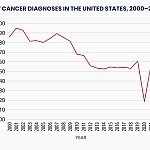
A growing body of evidence shows that “weekend warriors” — people who concentrate their exercise into one or two days per week — experience the same health benefits as daily exercisers.
Physical activity guidelines for adults recommend at least
Enter the weekend warriors who hit their exercise goals in one or two days, typically on weekends. This consolidated approach to exercise has raised questions about its effects on health and longevity.
However, research increasingly demonstrates it’s the volume of exercise (hitting that minimum of 150 minutes), not the pattern, that determines the benefits.
Prior studies have linked weekend warrior workouts with comparable brain health and cardiovascular benefits as regular exercisers.
A new study published April 2 in the
The results show that compared to physically inactive individuals (those not meeting minimum recommended exercise guidelines), weekend warriors experienced mortality benefits comparable to those who exercised regularly throughout the week.
Both weekend warriors and regularly active individuals showed significantly lower risks of death from all causes, including cardiovascular disease and cancer. Notably, this research marks the first analysis to examine the relationship between physical activity patterns measured by fitness trackers and mortality outcomes.
Brad Donohue, PhD, a professor of psychology and creator of The Optimum Performance Program in Sports (TOPPS) at the University of Nevada Las Vegas, told Healthline the findings were “some of the best evidence we have seen so far” to support the weekend warrior exercise pattern. Donohue wasn’t involved in the study.
Researchers analyzed health and exercise data from more than 93,000 participants in the UK Biobank, a comprehensive biomedical database, to investigate potential associations between exercise patterns and mortality risk.
The study cohort was predominantly white (97%) with an average age of 62 years old; women comprised slightly more than half (56%) of participants.
To be included in the study, participants needed a complete seven-day record of physical activity captured by wearable fitness trackers — a method that typically provides more reliable data than self-reported exercise habits.
The trackers, which utilized machine learning, could detect and classify various physical activities, from bicycling to dancing.
Participants were then divided into three distinct groups based on their activity levels:
Over roughly eight years of follow up, both active groups experienced significantly less mortality risk than sedentary participants.
“These findings send an important message that all movement counts. Many people struggle to fit in daily exercise during the work week, but this research shows that even if you can only be active on the weekends, you can still gain meaningful health benefits,” said Keith Diaz, PhD, an associate professor of behavioral medicine at Columbia University Medical Center and member of the AHA’s Physical Activity Science Committee, not involved in the study, told Healthline.
When compared to the inactive group, people who exercised throughout the week had a lower risk of death from all causes (26% lower), cardiovascular disease (24% lower), and cancer (13% lower).
Surprisingly, the protective benefits were even greater among the weekend warrior group — a result the study authors had not anticipated.
Weekend warriors had a 32% lower risk of death from all causes, a 31% lower risk of death from cardiovascular disease, and a 21% lower risk of death from cancer.
However, there was no significant difference in risk when comparing both active groups.
“Neither approach was superior to the other. So, if you’re already active during the week, there’s no need to switch to a weekend-only routine. What matters most is meeting the recommended amount of physical activity in a way that fits your lifestyle,” said Diaz.
Donohue told Healthline that the latest research on weekend warriors is “inspiring”, as it could encourage more people who might otherwise struggle to find time for exercise during the week.
One of the clear messages about the weekend warrior phenomenon is that everyone’s lifestyle may vary, so finding a personal strategy to meet minimum physical activity goals is essential.
“Weekend warrior workouts can take many forms. The best ones are those you enjoy and can stick with. For beginners or those returning to working out, something as simple as a long walk, leisurely bike ride, going for a hike at a local park, or doing some yard work or gardening can provide health benefits,” said Diaz.
Other options for individuals with higher fitness levels include:
Consistency is key, though, just like anything else. Donohue pointed out that one of the biggest motivators for fitness is social connection.
“If you want to increase the likelihood that you’re going to maintain regular exercise, establish a relationship with someone who is going to do it with you,” he said.





